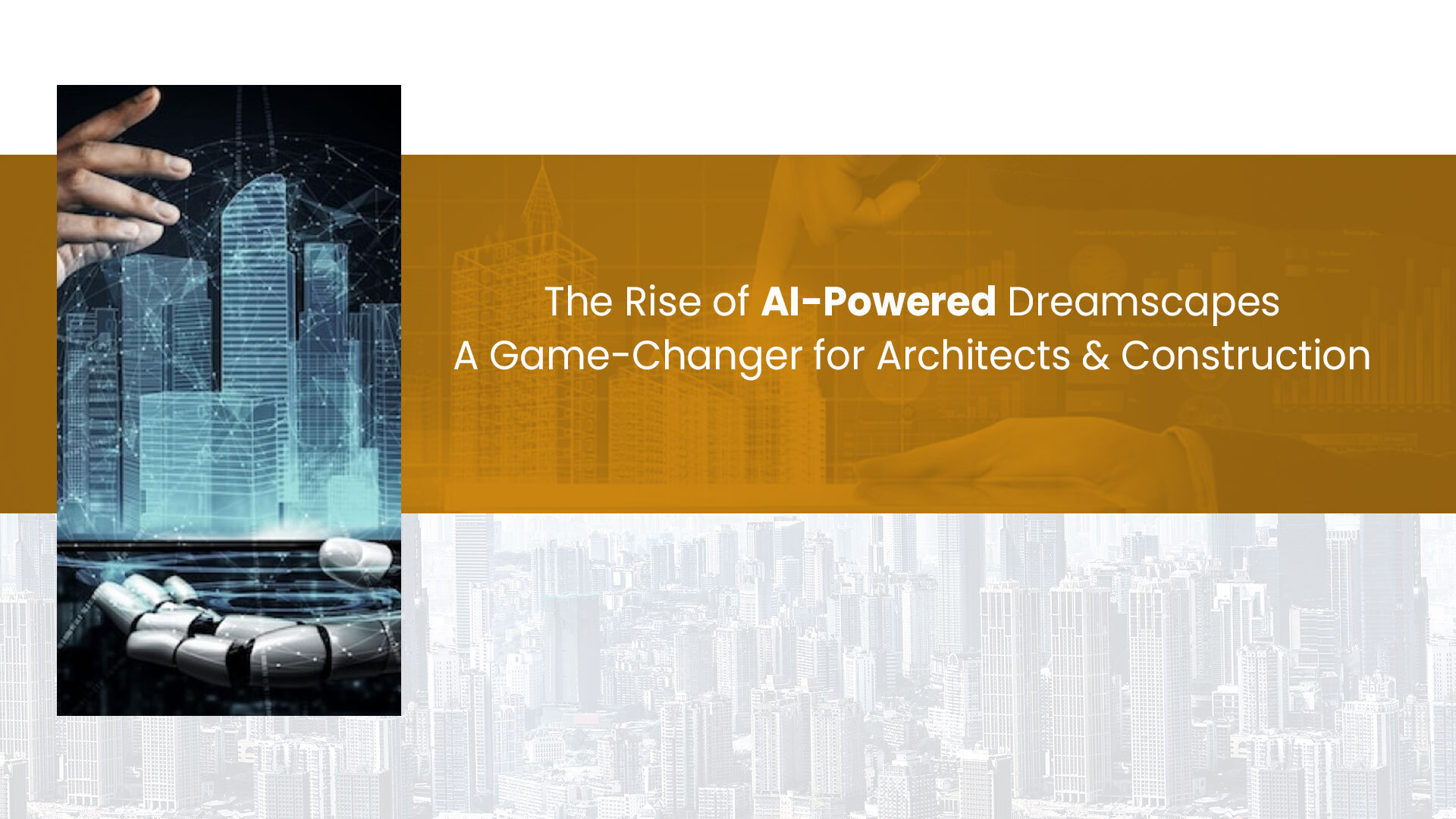
The Rise of AI-Powered Dreamscapes: A Game-Changer for Architects and Construction
Reading Time: 2 minutesThe architectural and construction industries have long relied on meticulous planning and visualization tools. However, the recent surge of Artificial Intelligence (AI) is revolutionizing the way we design and build. AI Generative Imagery (AGI) is rapidly transforming workflows, offering unprecedented creative freedom and streamlining project lifecycles.
Table of Contents
ToggleThe Impact of AI Generative Imagery in Construction
In just a few years, AI in Construction, particularly through AGI, has undergone a dramatic evolution:
- Enhanced Design Exploration: Architects can rapidly generate and iterate on multiple design variations, fostering greater creativity and innovation. This allows them to explore unconventional options and identify optimal solutions faster.
- Improved Client Communication: AGI can create photorealistic renderings of proposed projects, helping clients better visualize and understand design concepts. This fosters clearer communication and reduces the risk of costly revisions later in the process.
- Streamlined Construction Planning: AI can generate 3D models based on conceptual designs, aiding in constructability analysis and early identification of potential challenges. This translates to smoother project execution and reduced costs.
Unique and Valuable Applications of AI Generative Imagery in Construction & Architecture
Beyond these core benefits, AGI offers architects and construction professionals unique and valuable applications:
- Site-Specific Design Optimization: By incorporating real-world data (e.g., terrain, lighting conditions), AI can generate design proposals tailored to a specific construction site, optimizing for factors like energy efficiency and aesthetics.
- Sustainable Design Exploration: AGI can be trained on datasets of sustainable building materials and practices. This allows architects to explore environmentally responsible design options and optimize energy consumption throughout a building’s lifecycle.
- AI-Driven Code Compliance: Advanced AI systems can analyze design concepts against building codes and regulations, flagging potential non-compliance issues early in the design phase. This reduces the risk of delays and rework due to code violations.
The Future of AI Generative Imagery
As AI technology continues to evolve, we can expect even more transformative applications for architecture and construction:
- Real-Time Design Feedback: Imagine AI providing real-time feedback on design choices, suggesting improvements based on structural integrity, constructability, and sustainability parameters.
- Generative Construction Planning: AI could analyze project plans and generate optimized construction schedules, taking into account material availability, labor costs, and weather conditions.
- Collaborative Design Ecosystems: AGI could facilitate seamless collaboration between architects, engineers, and construction teams, allowing for a more integrated and efficient design-build process.
AI Generative Imagery is no longer a futuristic concept; it’s a powerful tool actively shaping the future of architecture and construction. By embracing AGI, architects and construction professionals can unlock a new era of creative freedom, streamlined workflows, and enhanced project outcomes.
Sources:
https://www.autodesk.com/design-make/articles/generative-ai-in-construction
https://amazingarchitecture.com/tags/ai-architecture
https://www.autodesk.com/design-make/articles/generative-ai-in-construction
You may also like
Recent Blog Post
- Track construction field productivity in real time with digital tools
- Choosing the right construction site management app for field teams
- Best construction document management software solutions for 2025
- Revolutionizing Construction Inspections: The Power of Construction Inspection Software
- Centralized Communication and Collaboration: The Backbone of Construction Project Management
Work Smarter, Not Harder
iFieldSmart empowers your team with AI-driven efficiency to simplify scheduling, boost collaboration, and keep projects on track — with human support every step of the way.
